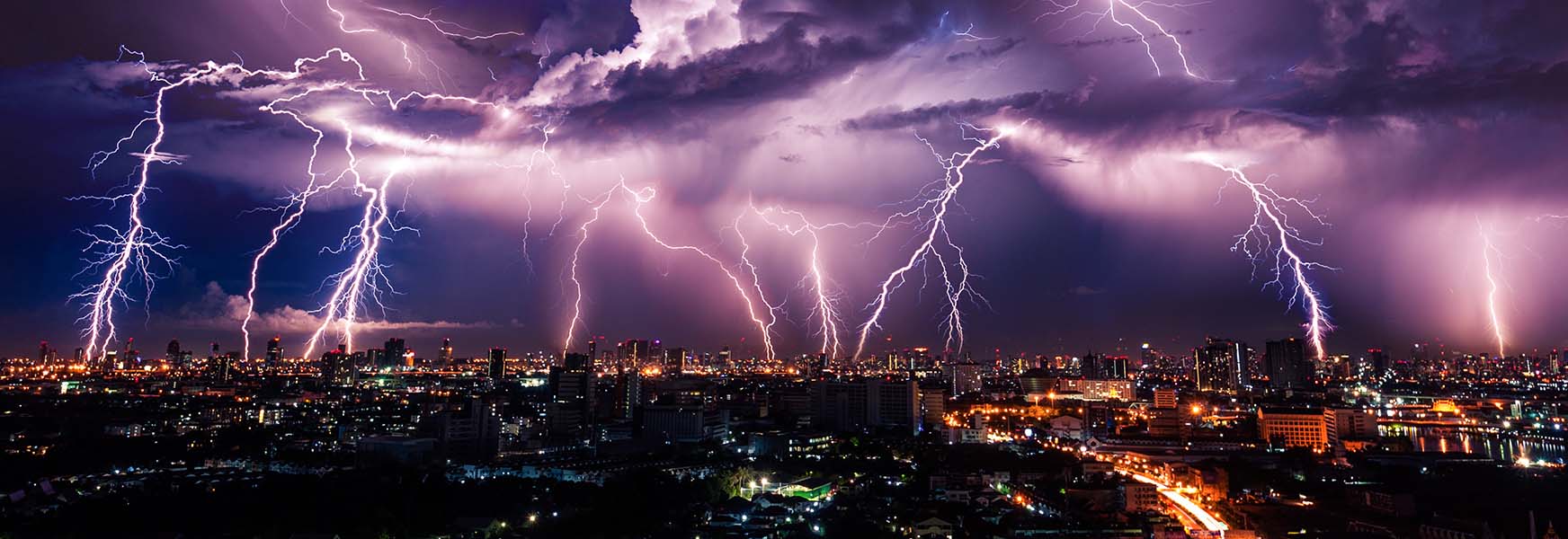Lack of Lightning Safety Could Mean One Strike and You're Out

As we approach the summer months, the threat of lightning greatly increases across the country. According to The National Weather Service, lightning strikes occur an average of 25 million times per year in the U.S., and over a 30-year period (1989-2018), “the U.S. had an average of 43 reported lightning fatalities per year.” Whether recreating or working outdoors, it is important to realize the dangers of lightning strikes. Because awareness and proper planning can help prevent a tragedy, the National Lightning Safety Council has declared June 19-25, 2022, National Lightning Safety Awareness Week.
Learning the science behind lightning is the first step in understanding why it is so important to find a safe place during thunderstorms. In simple terms, “lighting is a giant spark of electricity in the atmosphere, or between the atmosphere and the ground.” Collisions between ice particles, hail, and rain in the cloud build up friction and create electrical charges. The negative charges usually end up at the bottom of the cloud while positive charges build up at the ground’s surface, concentrated on things that project upward, such as trees, mountains, antennas, or even people. These positive charges flowing up from these elevated points will eventually connect with the negative charges from the cloud, and lightning is born. Lightning can also travel between clouds. At more than 50,000 degrees Fahrenheit, lightning causes air to rapidly expand, which results in thunder. So, if you hear thunder or a distant rumble, you may already be in danger and should take cover.
Part of lightning education is understanding the truths about lightning amid pervasive myths. For example, lightning CAN strike the same place twice and often strikes more than 3 miles from the storm center -- sometimes even 20 miles away! Lighting victims do not remain “electrified,” so providing prompt CPR and first aid can save your co-worker's life. Don’t rely on a vehicle’s tires to disperse lightning’s electricity. It is the metal frame that conducts the current to the ground. NOAA supplies more information on lightning myths.
Enclosed buildings are the safest option when a thunderstorm approaches, with a few added precautions to increase safety. For example, it is wise to stay off corded telephones because electricity can travel through the wiring. Cell phones, however, are safe. Likewise, don’t touch electrical equipment or cords during a lightning storm, and avoid plumbing such as sinks and showers. Stay away from windows, doors, and concrete walls, which could leave you exposed to electrical current.
When working outside, the best option is to plan ahead. Monitor the weather forecast for thunderstorms and consider postponing activities. If you do continue with your plans, know where you will go and how long it will take to get there if threatening weather emerges. Monitor the weather and look for signs of a developing thunderstorm, such as darkening skies, flashes of lightning, or increased winds. Remember, no place outside is safe from lightning! When you hear thunder, lightning is close enough to strike. Immediately move to an indoor shelter, such as a car with metal roof and sides or an enclosed building. Stay there until 30 minutes after you hear the last clap of thunder.
If you are caught outside with no safe shelter nearby, the following actions may reduce your risk. Immediately get off elevated areas, such as hills, mountain ridges, or peaks. Avoid open areas. Don’t be the tallest object around. Never lay flat on the ground. Use the lightning crouch position. Never use a tree, cliff, or rocky overhang for shelter. Immediately get out and away from ponds, lakes, and other bodies of water. Stay away from objects that conduct electricity, such as barbed wire fences and power lines.
Thankfully, only about 10% of lighting strike victims die, thanks in part to prompt CPR. However, the remaining 90% (about 400 people per year) may be left with significant disability, including irreversible brain damage. Men are statistically more likely to be struck by lightning, but this may be due to the higher percentage of men working in outdoor-related jobs.
Employers have a responsibility to create and implement emergency procedures for thunderstorms and potential lightning events that include systems of communication, proper shelter, injured worker rescue and first aid, and decision making for resumption of work activities. The OSHA Lightning Safety Fact Sheet provides guidance to workers and employers and lists highrisk work activities. The Federal Emergency Management Agency (FEMA) also has great tips on preparation. And check out our earlier blog, "From Out of the Blue - Misconceptions About Lightning" MEMIC policyholders can access training and planning materials through BLR and weather safety video training in the video lending library. Talk to your MEMIC safety consultant for more information.

